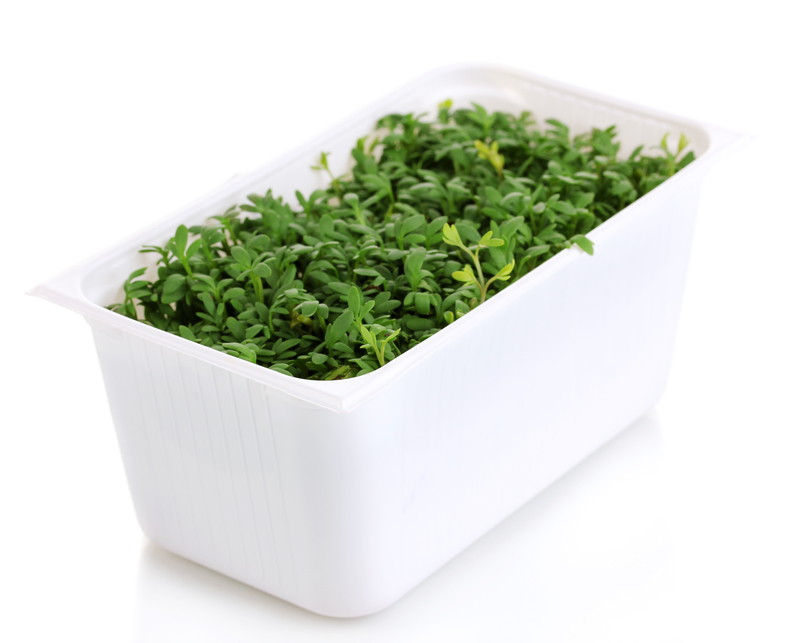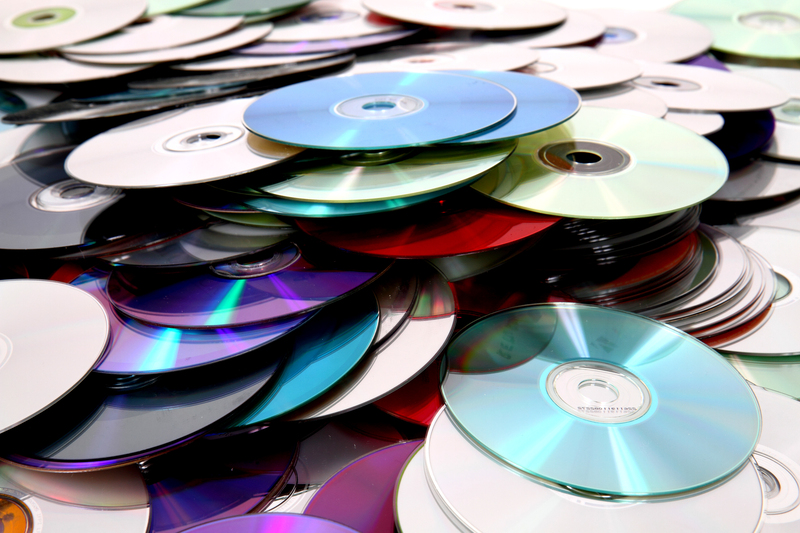Can We Transform Our Battle with Microplastic Waste?
The growing crisis of microplastic pollution has become a pressing environmental concern in recent years. Microplastic waste not only infiltrates our oceans, rivers, and soils, but also accumulates in the air we breathe and the food we eat. As awareness grows, the urgent question emerges: Can we truly transform our battle with microplastic waste? In this comprehensive guide, we will explore the origins, impacts, current solutions, future innovations, and practical steps toward redefining humanity's approach to this silent menace.

Understanding Microplastic Waste: What Are We Facing?
Microplastics are defined as plastic fragments less than 5mm in size, resulting either from the breakdown of larger plastic items or manufactured as microbeads for use in various products. Microplastic contamination is insidious--they are almost invisible to the naked eye, but their environmental impact is massive.
Sources of Microplastics
- Primary Microplastics: These include tiny particles deliberately manufactured for specific uses, such as microbeads in exfoliating cosmetics and cleaning products.
- Secondary Microplastics: These fragments arise from the degradation of larger plastic debris, such as water bottles, bags, synthetic clothes and packaging.
- Household Sources: Laundry, tire wear, and household dust all contribute to microplastic waste generation.
The Escalating Scale of Microplastic Pollution
Estimates suggest that the world produces over 300 million tons of plastic each year, with an alarming portion breaking down into microplastic particles. These minuscule pieces spread across every corner of our planet--from the deepest ocean trenches to the highest mountain peaks.
- Water Contamination: Scientists have detected microplastics in both saltwater and freshwater sources, including the tap water of major cities.
- Soil Infiltration: Agricultural lands receive microplastics through sewage sludge, fertilizers, and irrigation.
- Airborne Microplastics: Urban dust, tire wear and plastic degradation send microplastics into the atmosphere, where they eventually settle or are inhaled by living creatures.
Impacts of Microplastic Waste on the Planet
The pervasive nature of microplastic waste has far-reaching consequences for the environment, wildlife, and human health. Understanding these impacts is key to transforming our fight against plastic micropollution.
Environmental Effects
- Marine Ecosystem Devastation: Microplastics absorb toxins and are ingested by marine life--disrupting food webs and harming species from plankton to whales.
- Soil Degradation: Microplastics change soil properties, affect water retention, and impair the growth of plants and crops.
- Disruption of Natural Cycles: Plastics interfere with nutrient cycles, as contaminated soils and waters reduce biodiversity and productivity.
Human Health Concerns
Recent research has discovered that humans are unwittingly consuming and inhaling microplastics daily.
- Contaminated Food and Water: Studies have found microplastics in seafood, table salt, bottled water, and even in fruits and vegetables irrigated with contaminated water.
- Potential Health Risks: The health effects of ingesting microplastics are still under investigation, but potential risks include inflammation, toxicity, and disruption of the endocrine system due to absorbed pollutants.
- Airborne Inhalation: Microplastic fibers are present in household and urban dust, meaning we regularly inhale these particles, with unknown long-term impacts.
Current Approaches in the Battle Against Microplastic Waste
Recognizing the threat, governments, non-profits, scientists, and industry leaders have launched efforts to mitigate the generation and spread of microplastic waste. While these efforts have made significant strides, the scale of the challenge remains daunting.
Regulatory and Policy Efforts
- Bans on Microbeads: Many countries have banned microbeads in cosmetics and personal care products.
- Single-use Plastic Restrictions: Several regions restrict or tax single-use plastics to reduce the volume of plastic waste entering the environment.
- Extended Producer Responsibility (EPR): Some governments require manufacturers to manage the entire lifecycle of their products, incentivizing innovation in design and materials.
Technological Innovations in Microplastic Reduction
- Filtration Solutions: Advanced water treatment methods, such as membrane filters and bioreactors, are being implemented to remove microplastics before they reach rivers and oceans.
- Laundry Filters: New filters attach to washing machines, capturing microfibers shed from synthetic clothing.
- Beach and River Cleanup Devices: Drones, booms, and skimmers collect plastic debris before it can fragment into microplastics.
Education and Public Awareness Programs
- Grassroots Campaigns: Non-profit organizations and community groups launch campaigns to inform and mobilize citizens to reduce plastic use and participate in clean-up efforts.
- School Curricula: Programs teaching children about plastic pollution encourage responsible consumer habits from an early age.
Innovative Strategies to Transform Our Battle with Microplastic Waste
Despite the progress made, the complexity and pervasiveness of microplastic waste contamination demand even more transformative solutions. To reshape the fight, we must embrace a holistic, multi-pronged approach across science, policy, technology, and culture.
1. Redesigning Products and Packaging
- Biodegradable Alternatives: Investment in biodegradable and compostable materials reduces the likelihood of plastics persisting as environmental hazards.
- Smarter Product Design: Designing products to minimize shedding of microplastics (e.g., less lint from textiles, innovative tire materials) addresses the issue at its source.
- Eliminating Unnecessary Plastics: Brands can remove secondary packaging, opt for non-plastic materials, and develop reusable solutions for common goods.
2. Circular Economy Initiatives
A circular economy models keeps materials in use for as long as possible, extracts the maximum value from products, and then recovers and regenerates them at the end of their service life.
- Closed Loop Recycling: Developing infrastructures for true plastic recycling prevents items from fragmenting into microplastics after disposal.
- Incentivized Return Systems: Deposit refund schemes encourage users to return plastics rather than discard them, reducing environmental leakage.
3. Advanced Filtration and Removal Technologies
- Nanotechnology Filters: Next-generation filters capture ultra-fine particles in industrial effluents, municipal water treatments, and even personal household filtration systems.
- Innovative Cleanup Methods: Biological approaches--such as organisms that can ingest or degrade microplastics--are under research as future cleanup tools.
4. International Collaboration
- Global Policy Alignment: Because microplastic waste travels across borders via air and water, international treaties and standards are essential.
- Data Sharing and Open Science: Coordinated sharing of research findings will accelerate innovation and implementation of best practices.
5. Shifting Consumer Culture and Behavior
- Minimalism and Conscious Consumption: Educating consumers to value quality and durability over disposability decreases the demand for throwaway plastics.
- Civic Engagement: Community cleanups, plastic bans, and active involvement in policy advocacy empower individuals and groups to drive visible change.
The Role of the Individual in the War Against Microplastic
Each person's lifestyle choices play a pivotal role in addressing the microplastic waste crisis. Here's what individuals can do:
- Choose Natural Fibers: Opt for clothing made from cotton, linen, wool, and other natural resources instead of synthetics that shed microplastics.
- Use Refillable and Plastic-Free Products: Favor metal, glass, or paper alternatives where possible for everyday items.
- Proper Waste Disposal and Recycling: Ensure plastics are cleaned and separated appropriately for recycling schemes.
- Support Responsible Brands: Shop with companies committed to sustainable practices and reduced plastic use.
- Advocate and Educate: Spread knowledge of microplastic pollution to friends, family, and policy makers.
- Reduce Synthetic Washing: Use laundry bags or filters to capture fibers, wash synthetic clothes less often, and at lower temperatures if possible.

Future Outlook: Can We Win the Battle Against Microplastic Waste?
The future holds both immense challenges and promising opportunities. While microplastic contamination has reached a global scale, societies around the world are mobilizing to transform this battle with innovative, science-backed solutions and collective action.
Emerging Research and Technology
- Bioengineered Solutions: Scientists are exploring bacteria and fungi capable of breaking down plastics into harmless byproducts.
- Precision Detection: Advanced sensors and AI algorithms will allow real-time monitoring of microplastics in water, air, and food.
- Green Chemistry Advances: Development of plastics that breakdown safely or are easier to recycle offers hope for closing the material loop.
The Path Forward
It's clear that no single solution will eradicate microplastic waste pollution. Instead, the answer lies in a tapestry of actions woven across sectors, borders, and communities. We must recommit to innovation, collaboration, and education--embracing the dual pillars of prevention and remediation.
- Strengthening Legislation: Enforce and expand global agreements to reduce plastic production and improve waste management.
- Fostering Sustainable Design: Encourage companies and inventors to develop materials and products with microplastic reduction in mind.
- Empowering Local Initiatives: Community-driven projects can address pollution at its source while adjusting to local realities.
Conclusion: Toward a Microplastic-Free Future
Can we transform our battle with microplastic waste? The resounding answer is yes--but only with shared responsibility and unwavering commitment. Through a marriage of technological innovation, bold policy action, responsible product design, and informed consumer choices, the trajectory of microplastic pollution can be reversed.
As we stand at the crossroads today, let us choose a future where oceans, soils, and all living beings are free from the shadow of microplastic contamination. With every choice, every invention, and every policy, we can build a cleaner, safer world--one where plastic returns to its roots as a miracle material and no longer lingers as an environmental curse. The time to act is now. Together, we can transform the battle with microplastic waste--and win.